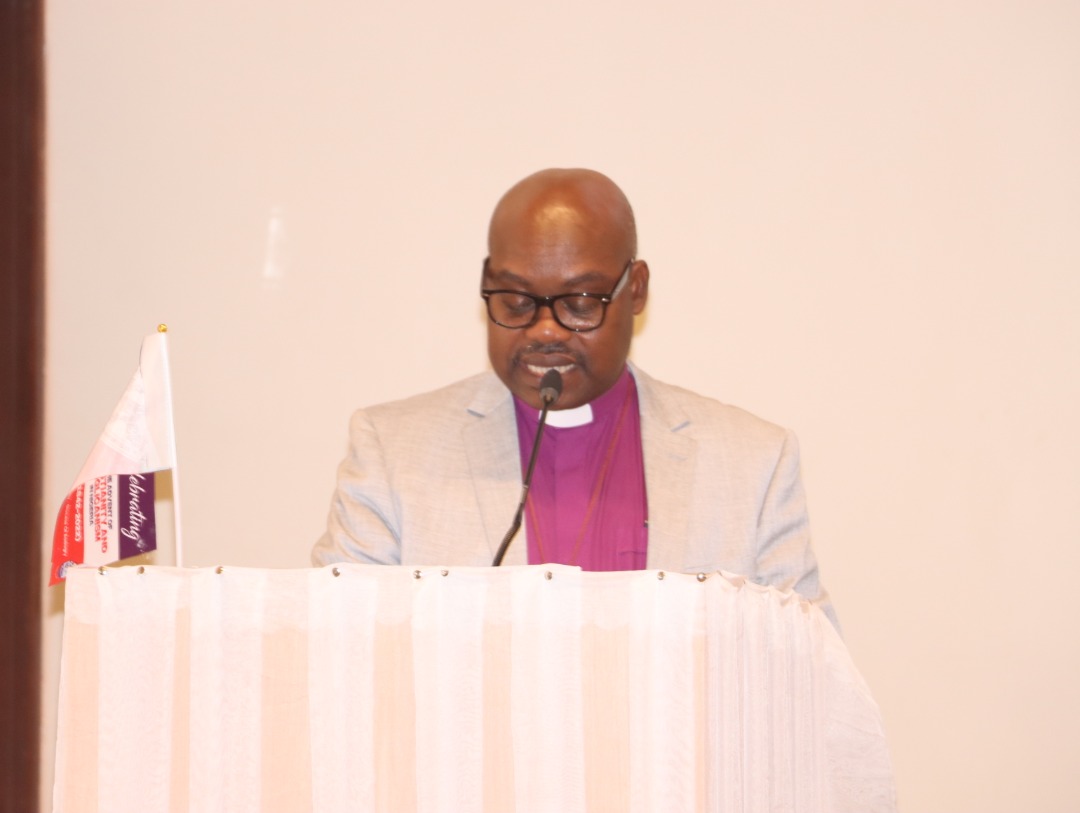TOPIC: ONE HUNDRED AND EIGHTY YEARS OF THE RE-PLANTING OF CHRISTINITY IN NIGERIA: THE AUDACIOUS LIFE TRANSFORMATION AND THE IMPACT OF THE ANGLICAN HERITAGE IN NIGERIA
BY THE RT REVD STEPHEN AYODEJI FAGBEMI PH.D(KENT), FICT
BISHOP OF OWO
PREAMBLE
One hundred and eighty years since the birth of Christianity in Nigeria; there is every reason to be grateful to God. So the Anglican Church deserves to be congratulated under the leadership of our Archbishop, Metropolitan and Primate Henry Ndukuba as the fifth (5th) Archbishop to lead the Church that has worked under grace to reach the uttermost parts of Nigeria with the gospel of Christ. I register my sincere appreciation for the appointment to deliver this lecture.
INTRODUCTION: Whilst appreciating so much that the Anglican Church has contributed to the Nigerian society, the intention of our present discourse is not to do an exhaustive history of the missionary enterprise to what is the present day Nigeria. Rather our attempt shall highlight very briefly the introductory phase of Christianity beginning with the Yoruba Mission as a paradigm for understanding the missionary encounters with the local culture and people in some other parts of Nigeria. Regardless of the challenges and difficulties, the missionary enterprise of the Anglican Church has brought immense transformation to our land to the extent that the Anglican presence is now evident in every part of Nigeria. Therefore, we have to confront the challenges of our generation in building on the efforts of our forebears.
It is incontrovertible that the Anglican Church is a major stakeholder in the evangelization of what in Modern times is known as Nigeria. The arrival of Henry Townsend as the leader of the CMS team to evangelize our land in 1842 was a historic and audacious move. The light shines and the darkness cannot comprehend it. One can only imagine what life must have been like before the missionary enterprise that has come with its long lasting transformational impact.
Was it a re-planting or the planting of Christianity in Nigeria? This is a very interesting question. Surely, there was no entity called Nigeria at the time of the planting of Christianity. Truly the 15th and 16th centuries witnessed the attempted planting of Christianity by the Augustinian and Capuchin monks from Portugal in both Benin and Warri. Unfortunately, the efforts did not succeed because the interests of the recipients were not genuine. The indigenous people, especially the rulers did not desire the faith but rather looked at what they could gain from it. For instance, the Oba of Benin wanted the missionaries to supply arms for him to prosecute his war with Idah people. And while he allowed some sons of his chiefs and one of his sons to be baptised, he feared that the faith might undermine his traditional religion. The failure of the missionaries to supply the expected arms and ammunition strained his relationship and the enterprise failed woefully. The only surviving evidence left behind was the cassock-shaped dress of Benin chiefs as we see them today. The situation in Warri is not too different; Christianity died in there leaving only the mighty cross at Warri and a few relics.
The period before the arrival of the missionaries is best described using the words of Lewis Hensely (1824-1905),
Thy Kingdom Come, O God.
Thy rule, O Christ begin;
break with thine iron rod,
the tyrannies of sin.
O’er lands both near and far,
thick darkness broodeth ye;
arise, O Morining Star
Arise and never set.
In other words, thick darkness covered the land, slavery, wickedness of various magnitude and dimensions, tribal and intra-tribal wars, idolatry and traditional worship, all characterized the period before the advent of missionary enterprise.
That story was to change from 1842 with the arrival of Henry Townsend as the first C.M.S. Missionary to arrive in Badagry. He met Thomas Birch Freeman of the Methodist Missionary Society and both of them celebrated Christmas together in Badagry after which he proceeded to Abeokuta on January 4 1843 where he was well received by Sodeke, the leader of the new Egba people city. Thus Badagry and Abeokuta are two important earliest Christian centres in Nigeria.
Three significant and interrelated factors played important roles in both the missionary enterprise and the subsequent growth of the Church in Nigeria through the Anglican Mission. First is the birth of the Church Missionary Society in 1799, as a result of the English Evangelical revival of the 18th Century of which John Wesley, Goerge Whitefied and the first Henry Venn, among other clergy of the Church of England, were prominent figures. Second was the abolition of slave trade and the return of freed slaves and, thirdly, but ironically, the wars and conflicts that pervaded the Yoruba country in the 19th century. These factors along with the Niger Expedition of the 1841 all formed the bedrock on which the Yoruba Mission and indeed the Missionary enterprise was born.
Now the central question that motivated the formation of the Church Mission (ary) Society was ‘What can we do to promote the knowledge of the Gospel among the heathen?’ Only six weeks later, the society formally adopted the title, The Society for Missions to Africa and the East’ and it later prefixed it with the word Church to distinguish it from others. It was to this group that William Wilberforce and others belonged who agitated for the abolition of Slave Trade, partly attributable to their conviction and desire to positively influence the social structure of their days. This became their drive towards the evangelization of the Yoruba country especially through their insistence on legitimate trade among the peoples of West Africa.
In establishing their mission, they had a clear belief that ‘only men who had experienced the grace of God in their own hearts and lives were qualified to proclaim the messages of that grace to others…’ This was why they did not join the existing missions that emphasized the ministry of the clergy or the ordained. Rather they insisted that the conversion experience was necessary as ‘they could not say that ordination of itself conferred that essential qualification’ . This is what Ade Ajayi compares with the current ‘Born Again’ emphasis in modern day evangelical circles in Nigeria.
The conflicts among the Yorubas in the 19th century were owing to indigenous political factors, but slave trade became an inevitable and obvious outcome of the wars and, therefore, a factor in the perpetuation of wars, as it later became a profit-making business. It was the encounter of the slaves with the missionaries that led to the establishment of Freetown, Sierra Leone, as a base ‘from which civilization and legitimate commerce would radiate’, thereby anticipating the collapse of the obnoxious traffic. The encounter made a lasting impression upon the slaves who were surprised by the magnanimity of the ‘saviours’ who set them free from their captors and slave dealers. It was among these freed people that the Gospel was first preached; and having ‘been saved from death or slavery’, they began life anew, on a new ground far away ‘from their ancestral gods.’ This explains why Oduyoye describes Sierra Leone as the nursery for Yoruba Christianity from where it was transplanted to Yorubaland.
It is remarkable that the influence of the ex-slaves was to have huge impact on the missionary enterprise not only in Yoruba land but even in Igboland. The ex-slaves that returned to Abeokuta numbering at least 3000
had imbibed Christianity in Sierra Leone, and they were anxious to preserve themselves and communicate their countrymen, what had been the instrument of their own moral and social elevation…the religion of the white man, who could liberate slaves gratuitously (as they simply expressed it) … ‘of the love of God’, not unnaturally found favour in their eyes.
Hence, Henry Townsend came to Abeokuta through Badagry in 1842, to help them keep the faith and to further communicate to people the gospel of salvation.
Thomas Fowell Buxton’s pamphlet of 1837 on The African Slave Trade and Its Remedy’ was particularly useful to the missionaries. As a means of converting the heathen and arresting slave trade, Buxton suggested strengthening the Preventive Squadron and initiating anti-slavery treaties with native African rulers, thereby bringing about the possibility of legitimate commerce and developing the continent, He said,
We must elevate the minds of her people and call forth the resources of her soil…Let Missionaries and school masters, the plough and the spade, go together and agriculture flourish; the avenues of legitimate commerce will be opened; confidence between man and man will be inspired; whilst civilization will advance as the natural effect, and Christianity operate as the proximate factor, of this happy change.
In other words, as the missionary enterprise began, education, agriculture and civilization were the allies that Christianity brought along, and they helped in the transformation of the lives of the people who came to see things anew.
THE EARLY DAYS
Badagry and Abeokuta were two very important entry points even if they present two different experiences of missionary enterprise. On January 17, 1845, the CMS party composed of 19 adults and many children finally returned for the full missionary work. The group was composed of the Reverends Townsend and Gollmer and their wives, the Reverend and Mrs Crowther and their two children, an interpreter, a catechist and his wife, four carpenters, labourers and servants. But following the death of Sodeke they could not proceed to Abeokuta and therefore had to remain in Badagry for their missionary work, which was said to yield little or no success due to the endemic traditional religion among the people. Although they received the Europeans warmly and showed no hostility, their hospitality was believed to be ill-motivated.
There was no open hostility or persecution, but the hold of the traditional religion on the people was very firm. They had welcomed missionaries, not because they wanted Christianity, but because they were weak and poor and they had hoped that the missionaries could attract some trade back to the town.
Nevertheless, Badagry became the first missionary base in Nigeria with the establishment of a church, mission house and school. The story was however different at Abeokuta.
It was only in 1846 that the Egba chiefs allowed the missionaries to enter into Abeokuta even though a new king had still not been installed. Presumably the ex-slaves would have facilitated this. Abeokuta became a significant missionary base not only for the practice of Buxton’s policy but also for its geographical advantages. From Abeokuta, the mission work began to spread to other parts of the Yoruba country, such as Ijebu, Ibadan, Ife, Ijaye, Ketu and Porto Novo. It was for this reason that Abeokuta was called the ‘Sunrise within the Tropics’, as it gave opportunities for ministry.
While Townsend settled in Ake, Crowther was based at Igbein and they started mission work with open-air sermons in the market place, discussion in the compounds of chiefs, and the instruction of enquirers in the mission house. By the end of 1847, there were four preaching stations in Abeokuta. On August 3, 1849, Crowther wrote: ‘The mission is to-day three years old. What had God wrought in that period! We have 500 constant attendants on the means of grace, 80 communicants, and 20 candidates for baptism.’
That is to say, that in Abeokuta and other places the light of the gospel had started to shine with amazing strength and rapidity, accompanied by its attendant blessings and impacts. ‘Just as the gospel spread from Abeokuta to other big towns…With every big town this being penetrated, the villages that depended on that town also came within the scope of the mission’s work.’
Meanwhile the Ibadan mission was also growing so well that by 1868,
More than a hundred baptized Christians assembled for worship in the church at Kudeti, the original and central station, and there were in addition many listeners, of whom there was always hope that some would resolve to confess Christ, and join themselves to the company of believers.
The success of the Yoruba Mission and the planting of Christianity in 1842 became a motivation to the exploration of the Missionary enterprise in Igbo land. The Igbo association in Freetown petitioned the Local Committee of the CMS in Freetown through Bishop Vidal that Christianity be extended to Igbo land. The first attempt under Edward Jones failed to the reach Igbo heartland and they returned to Sierra Leone. It was the second attempt under Revd John C. Taylor, also of Igbo descent, that left for Onitsha early 1857 and arrived on July 26 1857. They were formally welcomed by Obi Akazua on the 27th of July, 1857.
Thus the goodnews was preached. Henry Venn sent Revd Crowther to the Igbo mission and when the preliminaries had been completed, Crowther left northwards to Lokoja, leaving Taylor to take charge of the Igbo mission. Remarkably, with the support of the CMS, especially Henry Venn, its Secretary, Crowther was able to create a chain of mission stations up to Nupeland. The growth of the Niger territories was to be a factor in the eventual consecration of Samuel Ajayi Crowther as Bishop on St Peter’s day, June 29, 1864. Although it must be said that this was not an easy process, as it featured the very bad racial politics within the mission. There was a lot of opposition to Crowther’s consecration as a bishop. Henry Venn had developed this idea as part of his vision for a self-propagating, self-governing and self-supporting church.
Bishop Crowther’s consecration was a first step towards the attainment of the policy. Unfortunately the inability of the Europeans to manage the situation well, owing to paternalistic tendencies and unhealthy rivalry, not only undermined it but actually aborted the vision. The opportunity for indigenous leadership did not arise again after Bishop Crowther’s death until 1952, when the first indigenous Diocesan Bishop emerged.
In other regions of modern day Nigeria, where Christianity had been introduced such as the Niger Delta, the mission continued to flourish. In various places where the faith had reached through the Anglican Mission, it continued to grow in spite of challenges. The advancement of the gospel into Northern Nigeria through the expeditions and
missionary work of Bishop Crowther and his party was audacious and categorical in 1854 and 1857 respectively. Despite initial difficulties the reception given them by the Attah of Idah was helpful in establishing the presence of the church in the North and also in Nupeland. This became a means of accessing Northern part of Nigeria. By 1862 the first baptism up north had taken place at Igbede near Lokoja for eight adults and one child, which Lt Glover, a member of the expedition had excitedly described as ‘a new crusade against the Moslem and of Lokoja as the ground for future great bishopric’
Even though the 1900 treaty of Lord Lugard with the Northern Emirs constituted an obstacle to the advancement of the gospel in the North; it could only slow down the efforts of Christian mission. The historic proclamation of Archbishop Adetiloye and his brother bishops at Lokoja in 1990 was a symbolic act not only of opening the gate of the North to mission work in the Decade of Evangelism; it was also an effort to undo the compromise of the colonial leaders with the Emirs agreeing for them not to allow the evangelization of the North because of Islam. Remarkably, while the Diocese of Northern Nigeria was created in January 1954, Kano and Jos dioceses were created in 1980 on August 6 &10 respectively.
FROM MISSION TO CHURCH
The growth of the mission had become so evident that by 1887 they were beginning to see the need for an Episcopal see with the headquarters at Abeokuta under a native bishop. Remarkably the Reverend Oluwole opposed this idea that ‘it is not time yet for us to get a Native Bishop; when the time is come you have a large number of eligible men to choose from.’ It was not until 1919 that the mission was finally constituted into the Diocese of Lagos out of which others later began to emerge.
Within sixty years, it had grown into sixteen dioceses to the extent that by February 24, 1979, it was formally carved out of the Province of West Africa into an autonomous Church of the Province of Nigeria, now known as The Church of Nigeria-Anglican Communion. The resolution presented at the Provincial Standing Committee which met at Onitsha on February 27, 1975 reads thus,
In view of the numerous problems resulting from the size and the diversity of religion, and social structure in Nigeria; and the need for the Anglican Church in Nigeria to react, speak constantly with one voice, we respectfully pray the Episcopal Synod of the Church of the Province of West Africa to place before the next meeting of the Synod of the Province of West Africa the need of the Anglican Dioceses in Nigeria to be constituted into an autonomous province within the Anglican Communion.
By 1989, its second Archbishop, Joseph Adetiloye at the General Synod called on the Church of Nigeria ‘to consider the possibility of having at least one Bishop in every state of the Federation as our contribution to the unity and well being of the nation, as there will be responsible officers of the church who are able to act as spiritual advisers to the authorities of the states.’ With the inauguration of the Decade of Evangelism in 1990 after the 1988 Lambeth Conference, the spirit of mission came alive once again, to the extent that the Church of Nigeria was described as the ‘largest’ and ‘fastest growing’ Anglican Church in the Anglican Communion with an entirely indigenous leadership. This manifested also in the establishment of churches and not just in the creation of new dioceses. The creation of eight (8) missionary dioceses in the north and the consecration of their bishops on April 29, 1990, were audacious and unprecedented in the history of mission and church in Nigeria. It finally opened up Northern Nigeria for mission in a manner that was beyond imagination. And true to Lt Glover’s prediction, Lokoja is now ‘a great diocese’. This could only have been God at work with the Spirit of the C.M.S.
By the year 2010, the Church of Nigeria had grown into a strong church of 14 Ecclesiastical provinces, composed of 165 dioceses, the last of which is the diocese of Idoani, inaugurated on January 15, 2010.
What is more useful to our discussion is the impact that it had started to have. Noticeably, the link between the Anglican Mission and the communities was evident. The missionaries were received by the traditional rulers, even if in some cases they were only for personal selfish reasons. As the missionaries later admitted, the rulers accepted them not because they wanted the faith but because of the benefits inherent in it, such as education and access to Sierra Leone for easy trade. This manifested itself even more when the rulers released their children to the missions but did not convert or submit for baptism. In his letter to Henry Venn, Townsend wrote,
I do not doubt that the government of this country is set against the spreading of the Gospel: they see what they did not see at first, that the Gospel will overturn all their system of lies which they wish to preserve as entire as possible… At the same time they want us without our religion. They want us on account of the people in Sierra Leone, because they see that through us they are likely to keep open the road to the seas and obtain trade and be well supplied with guns and powder for sale or war as may be required.
In its effort or attempt to grow, the Anglican mission engaged in serious work of translating the Scripture into the local language in order that converts and would-be converts might be taught the art of reading the Bible. It engaged in the building of schools, as we saw in Badagry, and in training of personnel. Apart from the many primary schools it already established in the Yoruba country; in 1859, T.B Macaulay, Bishop Crowther’s son-in-law established the CMS Grammar School in Lagos, the first secondary school in Nigeria. The CMS established a printing press and taught boys the trade and in 1859 Townsend began the publication of Iwe Irohin, a Yoruba publication with some articles in English.
Thus the Anglican Mission began to spread the Christian influence to different aspects of the people’s life including their social order and moral life. Education, in particular was a helpful tool in the promotion of Christian knowledge and encounter. For instance, in 1969 about 40% of the predominantly Christian population of the city of Ile-Ife was reckoned to be Anglicans, not owing to any major evangelistic activity but largely as fruits of Anglican education and biological affiliation. In some cases it was children who had benefitted from the education that persuaded their parents to join them in their faith. Thus the provision of mission-sponsored schools has been a fruitful source of converts and a factor in the expansion of Christianity in Nigeria. The mission-trained elites became the foundation for an egalitarian Nigerian society. This is a major heritage that the Church cannot afford to overlook, and it is a major contribution of the Anglican Church to the Nigerian society.
The state of education in present day Nigeria leaves much to be desired, and it is imperative that the Anglican Church looks for a way to retake the initiative, not for pecuniary motive but for spiritual and moral rectitude and for the formation of godly values that are so desperately needed today.
The gospel brought a new life to the community of believers. By accepting the gospel, the people entered into a new life. This was aptly noted by R.B. Hone in his note to Anna Hinderer’s book of 1877, that
The Gospel of Christ having been first preached in Ibadan in 1852, and the good work having been faithfully prosecuted through the seventeen following years, the Church has been of necessity left, for the last eight years to hold its ground, and to make progress, by God’s blessing, without personal aid from Europeans, and with no human help than that of men who were born in heathen darkness, but who, in God’s good time, and by His grace, had been taught to rejoice in the light of His truth. It has pleased God to bless and strengthen their faith and constancy, His word has taken root, and is fruitful.
The Christian missionary enterprise had an enduring impact on the people, that even when some had backslidden they were said to be demonstrating a sense of shame about it, and they were found to be promoting Christianity in their own way.
The cessation of hostilities and wars was largely influenced by the missionaries because of their reluctance to assist in the provision of weapons. In fact, the formation of the modern Yoruba identity, as John Peel has demonstrated, is largely owed to the influence of the missionaries and the work of translation undertaken by Crowther. The same can be said of other parts of Nigeria, where the Anglican mission had played significant roles in helping to shape various communities. In Igbo land, Archdeacon Thomas John Dennis translation of the Bible – the Christian gospel – into the Igbo language (Union Igbo) was an all-inclusive translation of Igbo dialects, and this has undoubtedly impacted modern Igbo elites.
The Anglican mission contributed immensely to the development of the pre and post-independence elite of the Nigerian society. And the present day society could only have been building on their work.
It is remarkable that today, Badagry, which was believed to be unreceptive to the gospel, has become the seat of an Anglican Bishop, as the 91st diocese of the Church of Nigeria, inaugurated in 2005, with more opportunities to proclaim the gospel to neighboring communities and beyond Nigeria. In the modern era, Anglican bishops occupy important positions in the social structure of the society, serving both the local communities and the leadership of their respective States within the Federal Republic of Nigeria.
The CMS left a legacy of unwavering commitment to the gospel, ‘promotion of the knowledge of the Gospel among the heathen’ all of which were the aims of the CMS in its launch into the Nigerian space for mission. Just how well the Church continues in this is a matter that should always receive attention. The eradication of slave trade and offering of legitimate trading is a legacy that the missionaries worked hard to sustain.
CONCLUSION
In appreciating the audacity of the Anglican Mission in breaking into the Nigerian space in 1842, and the impacts it has had over the past One hundred and eighty years, it is vital to note that so many negative things have also crept into the religious space in the past few decades. The Anglican Church owes it a duty to the gospel and early missionaries not to abandon the call to shine and show forth the excellences of God in the midst of present and challenging darkness. It may well be due to the inability of the Church to maintain its gospel mission fervor that the varieties of Christian groups are now holding sway to the detriment of the mainline churches. This is a challenge that must not be overlooked and the Anglican Church in Nigeria must constantly work to maintain the purity of the gospel and the traditions of the fathers of the Church.
The coming of the Anglican Mission was audacious and its life transforming impact in Nigeria cannot be over emphasized. But the challenge on which to conclude this discourse is traceable to J. F. Ade Ajayi and it is one on which the present church must constantly reflect. When Christianity came to Nigeria in 1842, it would have been difficult to imagine that it would have succeeded so well, and yet be so ineffective: against Islam, against the forces of internal division, against social evils of indiscipline and self-centerdness. While this may appear challenging it does not negate or invalidate the huge impact that the Anglican Mission has made over the past One hundred and eighty years, when it has moved from mission to a strong church with clear evidence of growth. Rather it seeks to remind the church that there is a lot to do if it is to be faithful to its Anglican missionary heritage. This is setting an agenda for the church to recapture the land for Christ. That the Anglican Church has been on the forefront of sharing the gospel with the communities over the One hundred and eighty years must be a cause for gratitude to God and an encouragement not to relent in the coming years but to trust God for vision and strength to fulfill the task more effectively. But the task must start with a careful self-examination and exercise the courage to deal with any internal problems.
BY THE RT REVD STEPHEN AYODEJI FAGBEMI PH.D(KENT), FICT
BISHOP OF OWO
Share your story or advertise with us: Whatsapp: +2347068606071 Email: info@newspotng.com















